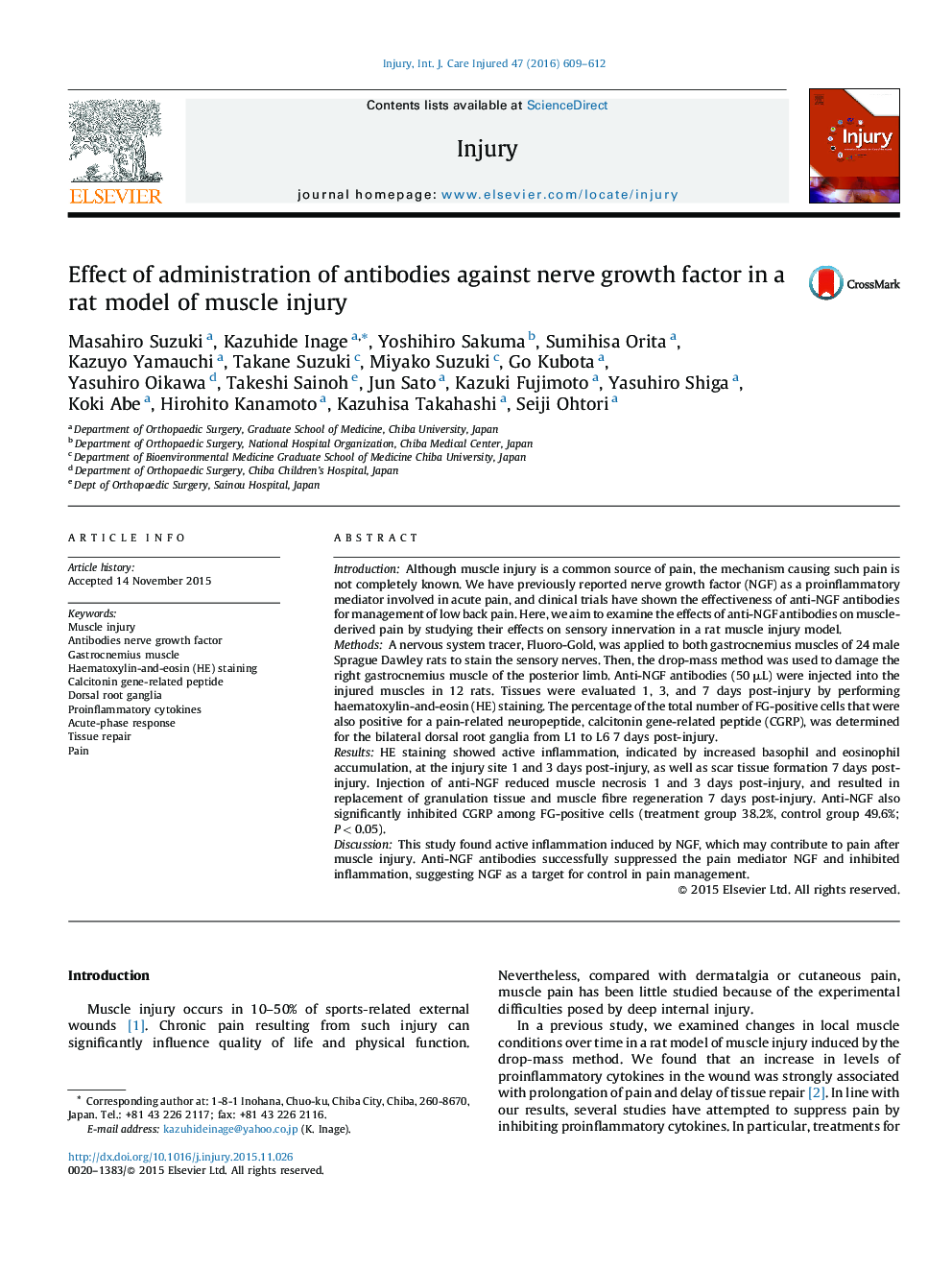| کد مقاله | کد نشریه | سال انتشار | مقاله انگلیسی | نسخه تمام متن |
|---|---|---|---|---|
| 3238687 | 1205973 | 2016 | 4 صفحه PDF | دانلود رایگان |
IntroductionAlthough muscle injury is a common source of pain, the mechanism causing such pain is not completely known. We have previously reported nerve growth factor (NGF) as a proinflammatory mediator involved in acute pain, and clinical trials have shown the effectiveness of anti-NGF antibodies for management of low back pain. Here, we aim to examine the effects of anti-NGF antibodies on muscle-derived pain by studying their effects on sensory innervation in a rat muscle injury model.MethodsA nervous system tracer, Fluoro-Gold, was applied to both gastrocnemius muscles of 24 male Sprague Dawley rats to stain the sensory nerves. Then, the drop-mass method was used to damage the right gastrocnemius muscle of the posterior limb. Anti-NGF antibodies (50 μL) were injected into the injured muscles in 12 rats. Tissues were evaluated 1, 3, and 7 days post-injury by performing haematoxylin-and-eosin (HE) staining. The percentage of the total number of FG-positive cells that were also positive for a pain-related neuropeptide, calcitonin gene-related peptide (CGRP), was determined for the bilateral dorsal root ganglia from L1 to L6 7 days post-injury.ResultsHE staining showed active inflammation, indicated by increased basophil and eosinophil accumulation, at the injury site 1 and 3 days post-injury, as well as scar tissue formation 7 days post-injury. Injection of anti-NGF reduced muscle necrosis 1 and 3 days post-injury, and resulted in replacement of granulation tissue and muscle fibre regeneration 7 days post-injury. Anti-NGF also significantly inhibited CGRP among FG-positive cells (treatment group 38.2%, control group 49.6%; P < 0.05).DiscussionThis study found active inflammation induced by NGF, which may contribute to pain after muscle injury. Anti-NGF antibodies successfully suppressed the pain mediator NGF and inhibited inflammation, suggesting NGF as a target for control in pain management.
Journal: Injury - Volume 47, Issue 3, March 2016, Pages 609–612
